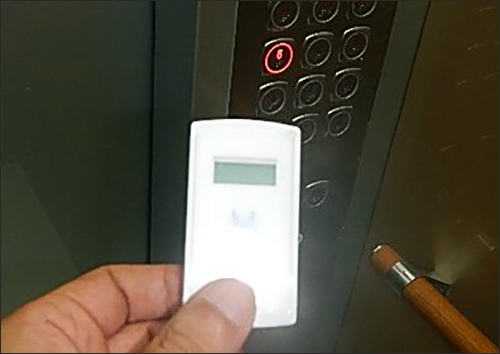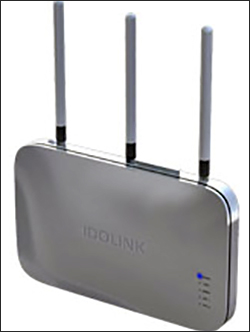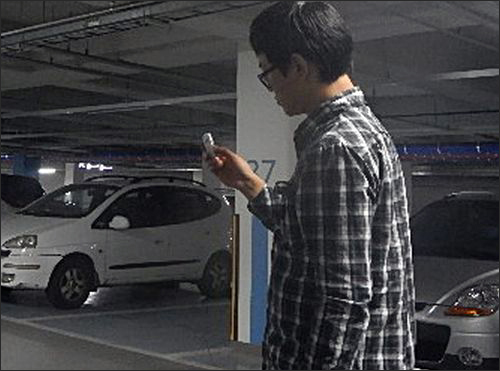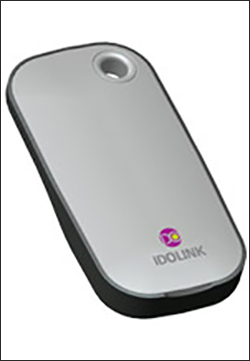Idolink, a Korean developer of radio frequency identification, real-time location system (RTLS) and Internet of Things solutions, is bringing its products to North America through its U.S. division, Linkpoints. Its ultra-wideband (UWB) RTLS solution and its ZigBee-based smart-home system, known as OnePass, are already being used in Korea. OnePass provides what Idolink calls a smart-home system for apartments, while the RTLS is being utilized to track the movements of individuals and assets in such places as factories, retail stores and hospitals.
Apartment construction and management company Samsung C&T Corp. has been using OnePass at its Raemian apartment buildings for approximately two years, enabling residents to access elevators and apartments, identify parking spaces, and be located in the event of an emergency. Telecommunications firm SKTelecom is employing the UWB solution as part of its T-Smart Position (TSP) system, which provides users with access to location-based data regarding assets, inventory or individuals.
The OnePass system consists of a tag, a receiver and repeaters, as well as cloud-based software for location-tracking purposes, according to Chris Shin, Idolink’s president. The tag is powered with a rechargeable battery and transmits its unique identifier via a 2.4 GHz signal compliant with the ZigBee and IEEE 802.15 standards. It also comes with 125 kHz and high-frequency (HF) 13.56 MHz radios for close-range transmission.
Gi-Tak Na, sales team manager for Raemian, says that before the system was installed about two years ago, “residents needed to enter the password on the keypad or use contact RFID cards. Although these methods were intuitive,” he says, there were “issues when it comes to security and access control.”
For instance, Na says, imagine coming home with hands full, and needing to search for an access card or press an elevator button. “The OnePass system solves this problem,” Na states, “by making your access to doors and elevator a breeze, yet in a secure manner.”
Each resident is assigned the OnePass tag for an apartment building or complex (typically, four passes are provided altogether for a single unit). The tag then acts as that person’s keyless entry, parked car locater and emergency calling device, as well as health information tracker.
The 1,000-unit apartment building is equipped with receivers to capture transmissions from the tags, and from repeaters that forward the tags’ signals to the server via the ZigBee system.
A resident can use the OnePass tag to locate his car within the apartment’s parking area. After parking his car in a space, he can press the “Save” button on the OnePass tag. The receivers within that vicinity will capture the transmission with the status of a car having been parked, and update that data in the software on the cloud-based server. When the resident later returns to the parking lot, he can access the space number for his car on the tag’s LCD screen, or use a touchscreen mounted in the parking garage running the OnePass software. In the latter scenario, he would simply input his ID number, and the touchscreen would display the vehicle’s location on a map of the parking lot.

Upon entering the building, the resident need not take out the OnePass tag; instead, he can simply enter with it in a pocket or bag. The receiver at the entrance captures the ID number transmitted by the tag and forwards that data to the software, which confirms the ID and unlocks the door. This function could also be provided in HF or low-frequency (LF) mode, Shin says, requiring that an individual tap her tag against a reader at the door, in order to increase security.
When the resident approaches the elevator, the receiver at that location captures the tag ID number via ZigBee. It then not only confirms that the individual is a resident permitted to take the elevator, but also determines the floor on which she lives. Once the elevator arrives, it automatically takes her to that floor.
When the resident reaches the front door of her apartment, the system will require her to tap her tag using an HF or LF transmission, so that the reader can capture the ID number, confirm that she is the resident and unlock the door. The close proximity read provides greater security than ZigBee would allow.
In addition, there are ZigBee receivers and repeaters inside each apartment, so that the software knows when residents are at home. This information is useful in the event of an emergency. If, for instance, the apartment building needs to be evacuated, emergency personnel or apartment managers can access the software, view if any residents are home and proceed to those apartments to rescue them.
ZigBee-based panic buttons are installed in apartments, as well as in public areas (parking lots, for instance), to transmit data indicating help is required during an emergency. In public areas, closed-circuit television (CCTV) cameras linked to the system can then be accessed so that security personnel can view what is happening in the area in which the button was pressed.
The OnePass device also tracks the individual’s activity, using its built-in motion sensors. This enables the software to provide the user with fitness-level information.
“As technology continues to develop, we are also trying to expand the usability of this technology with Idolink,” Na says. “One of the things that we are looking into is ways to integrate this technology into a smartphone, as more people have access to smartphones nowadays.”
Raemian runs the Idolink software on its own server. “Typically,” Shin says, “[customers] have their own building-management software, and the OnePass software integrates with it.” However, the OnePass software can also be provided on a hosted cloud-based server.
Idolink’s UWB RTLS solution uses tags and receivers made with UWB chips from Decawave. The tags are available as an indoor version (for tracking assets and individuals) and as an outdoor version ruggedized to withstand weather (for tracking objects that do not move often). Each tag transmits a 3.2 to 4.8 GHz signal encoded with a unique identifier (compliant with the IEEE 802.15.4a standard) to receivers, known as RTLS Access Points (RAPs). A RAP transmits its own signal, and when a tag receives that signal, it responds by transmitting its own signal. The RAP calculates the distance between itself and the tag by measuring the amount of time it takes for its signal to reach the tag, and for it to receive the tag’s response. The RAP then forwards that data to the master RAP, which delivers it to a server via LTE, 3G or Wi-Fi networks.
Depending on how close together the receivers are deployed, Shin says, the location accuracy can be less than 50 centimeters (19.7 inches), and the system can determine a tag’s height, position and speed. The RAP can identify a tag as far away as 100 meters (328 feet) or more, as long as there is a clear line of sight between the tag and the receiver.

Users can access that data simply by signing in to a server, or they can receive it on a mobile phone or tablet. The solution is designed to be easy to install and acquired through a software-as-a-service model. The diversity of tracking applications is broad—from assets and patients at hospitals to monitoring athletes during training, prisoners and personnel at correctional facilities, and temperatures and inventory location data throughout the cold supply chain.
In Korea, SKTelecom offers the technology as part of its T-Smart Position solution. TSP provides its customers with access control, as well as “smart factory” and “process control” features, by detecting the locations and movements of people and things, and providing intelligence about them based on those movements.
“The main problem we had with existing technology like Bluetooth, ZigBee, Wi-Fi and GPS was that the margin of error in accuracy was too great to be implemented in the industrial sites,” says Sung yong Suh, SKTelecom’s commercial solution team leader.
SKTelecom’s customers in Korea are already using T-Smart Position as an access-control solution for special security areas, and as a location-tracking system for warehouse pallet racks and vehicles. TSP is also being utilized for location tracking and control of automated guided vehicles (AGVs) in factories, location tracking of medical equipment at a hospital and—in a recent implementation—location tracking in duty-free shops.




